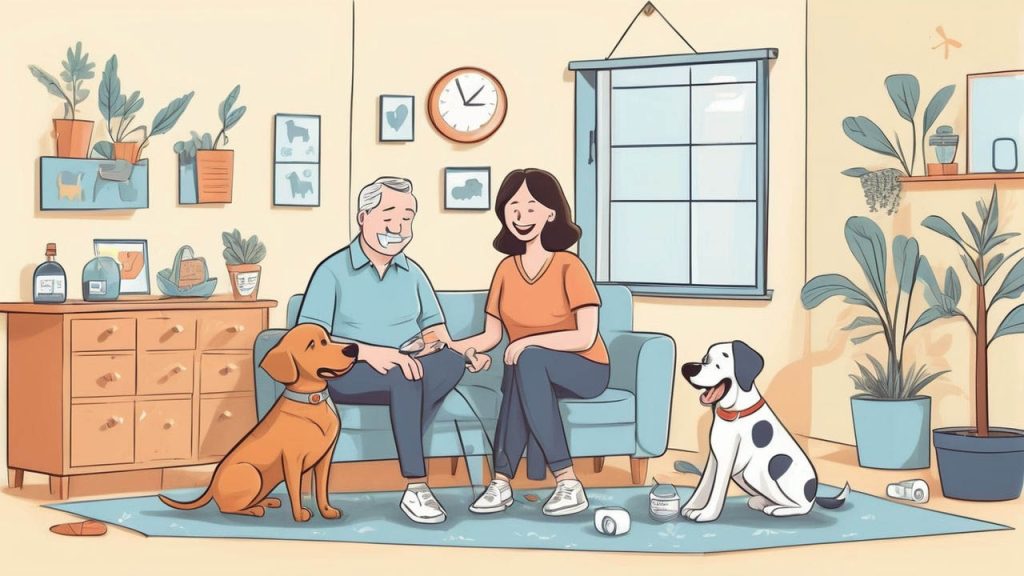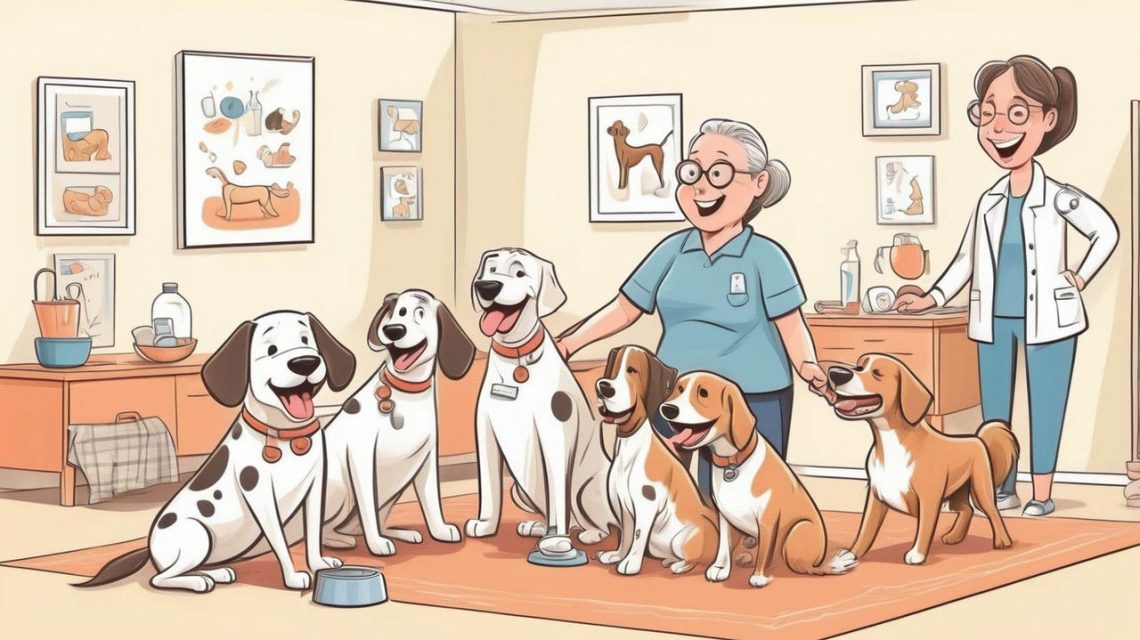Owning a dog is a commitment that goes far beyond daily walks and feeding routines. Long-term dog care means planning for your dog’s health, happiness, and overall well-being over their entire lifetime. From basic needs like food and shelter to comprehensive health plans and regular social interaction, every aspect of care plays a role in keeping your dog content and healthy.
In this guide, we’ll explore essential elements of long-term dog care, covering everything from healthcare routines to nutritional needs and mental stimulation. Whether you’re a new dog owner or have years of experience, these insights will help you support your dog’s well-being at every stage of life.
Why Long-Term Dog Care Matters
Long-term dog care helps prevent health problems, supports mental well-being, and strengthens the bond between you and your pet. Here’s why it’s essential:
1. Preventive Health Measures
Preventive care reduces the likelihood of severe health issues and ensures that your dog remains active and comfortable as they age. With regular check-ups and vaccinations, you can address health concerns early and avoid costly emergency treatments.
2. Consistent Routines Build Trust
Dogs thrive on consistency, so establishing regular feeding times, exercise routines, and bedtime schedules helps create a stable environment. This consistency reduces anxiety and strengthens your bond, creating a trusting relationship with your dog.
3. Mental and Physical Enrichment
A happy dog is a healthy dog. Long-term care isn’t just about physical health; mental stimulation is equally important. Engaging in regular training, play, and social interaction keeps your dog mentally sharp and emotionally fulfilled.

Key Components of Long-Term Dog Care
Long-term dog care involves several elements that work together to support your dog’s quality of life. Here’s what to focus on for effective care:
1. Health and Wellness
Regular veterinary visits are a cornerstone of long-term dog care. Here are some essential health practices:
- Vaccinations: Routine vaccinations help protect against common diseases. Keep a schedule of core and optional vaccines, as recommended by your vet.
- Flea and Tick Prevention: Year-round flea and tick prevention is essential to avoid parasites that can harm your dog.
- Dental Care: Regular teeth cleaning, either at home or with a professional, helps prevent gum disease, which can lead to further health issues.
- Exercise and Weight Management: Ensure your dog gets daily exercise to maintain a healthy weight, reducing risks of obesity-related health issues.
2. Proper Nutrition
Balanced nutrition is essential for long-term health. Here’s how to approach it:
- High-Quality Dog Food: Choose food that meets the nutritional needs of your dog’s breed, age, and health status. Consult with your vet to determine the best options.
- Regular Feeding Schedule: Maintain consistent feeding times to support digestion and routine.
- Hydration: Keep fresh water available at all times to prevent dehydration, especially during warmer months.
- Supplements: In some cases, your vet may recommend supplements like glucosamine for joint health or omega-3 fatty acids for skin and coat health.
3. Grooming and Hygiene
Regular grooming keeps your dog comfortable and can also serve as a health check. Here’s a basic routine:
- Brushing: Brush your dog’s coat regularly to reduce shedding and keep skin healthy. The frequency depends on their coat type.
- Nail Trimming: Trim nails to prevent discomfort or injury. Many dogs need trims once a month, but some may need it more often.
- Bathing: Bathe your dog every few months, or as needed, depending on their breed and activity level.
- Ear and Teeth Cleaning: Check ears for wax buildup and clean them gently. Regularly brush teeth or use dental chews to prevent plaque.
Mental and Social Enrichment
Dogs are social animals who thrive on interaction and mental engagement. Mental stimulation is as crucial as physical health:
1. Training and Obedience
Training is a lifelong part of long-term dog care. Beyond basic obedience, advanced training sessions provide mental stimulation and reinforce good behavior. Simple activities like practicing commands, learning new tricks, or agility training can engage your dog’s mind.
2. Socialization with Other Dogs
Regular socialization helps prevent anxiety and behavioral issues. Dog parks, playdates, and puppy daycare provide safe spaces for your dog to interact with other pets, helping them feel confident in different settings.
3. Interactive Toys and Games
Investing in toys that encourage your dog to think and solve problems keeps them occupied and happy. Interactive toys, such as puzzle feeders or treat-dispensing balls, are ideal for keeping them mentally engaged.
Building a Routine for Long-Term Care
Establishing a structured routine brings predictability to your dog’s life, reducing anxiety and promoting trust. Here’s a suggested daily routine:
1. Morning Routine
- Walk or Exercise: Start with a morning walk or play session. This helps burn energy and prepares them for the day.
- Feeding Time: Give a balanced breakfast after exercise to kickstart their metabolism.
2. Afternoon Enrichment
- Play and Socialization: Schedule time for training or interactive play in the afternoon. If you’re at work, consider a dog walker or interactive toy to keep them occupied.
- Rest Periods: Dogs need plenty of rest, so make sure they have a comfortable spot for naps during the day.
3. Evening Wind-Down
- Exercise and Dinner: A second walk or playtime in the evening keeps them engaged. Afterward, provide dinner at a consistent time.
- Quiet Time: Finish the day with a quiet, calming activity, like brushing or a gentle massage, to help them wind down.
Long-Term Financial Planning for Dog Care
Caring for a dog over the long term involves financial commitment. Planning for future expenses can make managing long-term care easier:
1. Budget for Routine Expenses
Calculate routine expenses, including food, vet visits, grooming, and preventive care. Having a monthly budget can prevent unexpected stress and ensure your dog’s needs are consistently met.
2. Pet Insurance or Emergency Fund
Pet insurance is helpful for covering unexpected health costs, especially as your dog ages. Alternatively, you can set up a pet emergency fund to ensure you’re financially prepared for sudden veterinary needs.
3. Plan for Senior Care
As dogs age, their care needs may increase. Budget for additional expenses related to senior care, such as mobility aids, specialized diets, or more frequent vet visits.
FAQs About Long Term Dog Care
How often should I take my dog to the vet?
- Young and adult dogs benefit from annual check-ups, while senior dogs may need semi-annual visits to monitor age-related health changes.
What is the best diet for long-term health?
- High-quality food suited to your dog’s breed, age, and health status is key. Your vet can recommend the best options, including any supplements.
How can I ensure my dog stays mentally stimulated?
- Incorporate daily training, interactive toys, and socialization activities. Variety keeps them mentally sharp and helps prevent boredom.
How do I manage long-term care for a senior dog?
- Senior dogs may need special diets, joint support, and extra vet check-ups. Gentle exercise and comfort adjustments, like padded beds, can also help maintain their quality of life.
Is pet insurance worth it for long-term care?
- Pet insurance can be a wise investment, especially for covering costly health issues. Research policies that cover regular care and emergencies to find the best fit.


